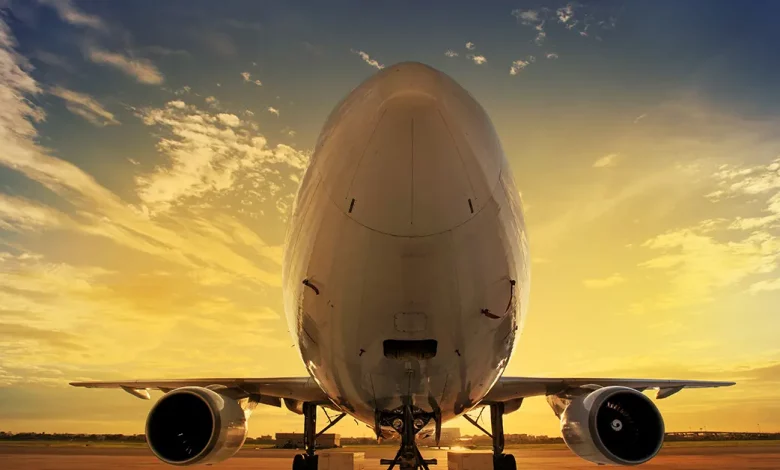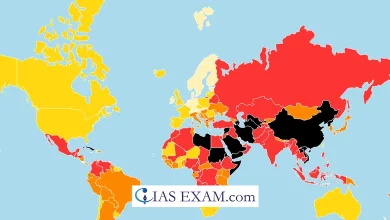
Context- Boeing had recently asked 737 MAX operators globally to carry out inspections after a loose bolt was found in the rudder control system of one of the planes.
Aviation Sector in India
- India is the third-biggest domestic aviation market within the global, after America and China.
- The Indian Aviation Industry is one of the quickest developing in the world, it is valued at $20 Billion in 2020 and is projected to double through 2027.
- India has 137 airports which include 103 Domestic Airports, 24 International Airports, and 10 Customs Airports.
Regulation of Aviation Sector in India
- The Ministry of Civil Aviation is responsible for formulation of national rules for the improvement and regulation of the Civil Aviation sector.
- It is liable for the administration of the Aircraft Act, 1934, Aircraft Rules, 1937 and numerous other legislations bearing on the aviation zone.
- It exercises administrative control over attached and self sufficient organizations just like the Directorate General of Civil Aviation, Bureau of Civil Aviation Security, Indira Gandhi Rashtriya Uran Akademi and affiliated Public Sector Undertakings like Airports Authority of India and Pawan Hans Helicopters Limited.
- The Directorate General of Civil Aviation is the regulatory body primarily managing protection troubles.
- It is chargeable for law of air transport offerings to/from/within India and for enforcement of civil air rules, air safety and airworthiness standards.
- It additionally co-ordinates all regulatory capabilities with the International Civil Aviation Organisation.
- Airports Authority of India (AAI): The AAI is answerable for managing and developing civil aviation infrastructure, such as airports and air navigation services.
- Bureau of Civil Aviation Security: The essential duties of BCAS consist of laying down standards and measures with respect to safety of civil flights at international and domestic airports in India.
- Bilateral Air Services Agreements (BASAs): India enters into bilateral agreements with other countries to modify air offerings between them. These agreements outline the number of flights, routes, and different operational details between the two international locations.
Challenges Faced by Indian Aviation Sector
- Safety Related Challenges
-
-
- Pilot Fatigue: Pilot fatigue stays a protection problem globally. Ensuring that pilots adhere to regulated duty hours, acquire enough relaxation between flights, and feature access to adequate centers for rest is essential to prevent fatigue-related incidents.
- Technological Integration: Ensuring that pilots are thoroughly skilled to deal with and troubleshoot new technology is vital for preserving protection.
- Maintenance Practices: Strict adherence to preservation schedules, regulatory standards, and the use of exceptional spare elements are important for stopping technical disasters that could compromise aircraft protection.
- Aircraft Aging: The aging fleet of some airlines can pose protection challenges.
- Communication and Coordination: Effective verbal communication and coordination amongst one of a kind stakeholders, which include air traffic management, airlines, and floor offerings, are important for stopping misunderstandings and ensuring safe and efficient operations.
- Emergency Response Preparedness: Being prepared for emergency conditions, together with engine failures, scientific emergencies, or other in-flight incidents, is crucial.
-
- Industry Related Challenges
-
- High Operating Costs: Airlines in India regularly face excessive high operating costs, including fuel prices, airport charges, and maintenance costs.
- These factors impact the profitability of airways and may lead to elevated price tag charges for passengers.
- Cutthroat Pricing: To attract passengers, airlines in India often resort to dramatically slashing ticket prices, making it challenging to balance the books, especially when operational costs remain high.
- Infrastructure Constraints: Despite huge growth, the infrastructure at many airfields in India faces challenges in phrases of capacity, renovation, and modernization.
- Airspace Congestion: The restrained availability of airspace and old air visitors management systems make contributions to congestion and delays in flight operations.
- Volatility in Fuel Prices: Fluctuations in worldwide oil prices can drastically affect the operating expenses of airways.
- Technological Advancements: While technological advancements can beautify safety and performance, maintaining up with rapidly evolving technologies calls for huge investments.
- High Operating Costs: Airlines in India regularly face excessive high operating costs, including fuel prices, airport charges, and maintenance costs.
Suggestions
- Regular maintenance, stringent tests, and adherence to retirement regulations are vital for ensuring the airworthiness and protection of older aircraft.
- Regular drills and training physical activities should be conducted to enhance the preparedness of flight and floor crews.
- Adhering to global aviation safety standards set by means of corporations along with the International Civil Aviation Organization (ICAO) is crucial for maintaining the security of planes.
- Compliance guarantees a regular and standardized approach to aviation security.
- Streamlining regulatory procedures is vital for a more agile and responsive industry.
Source: Indian Express





.png)



